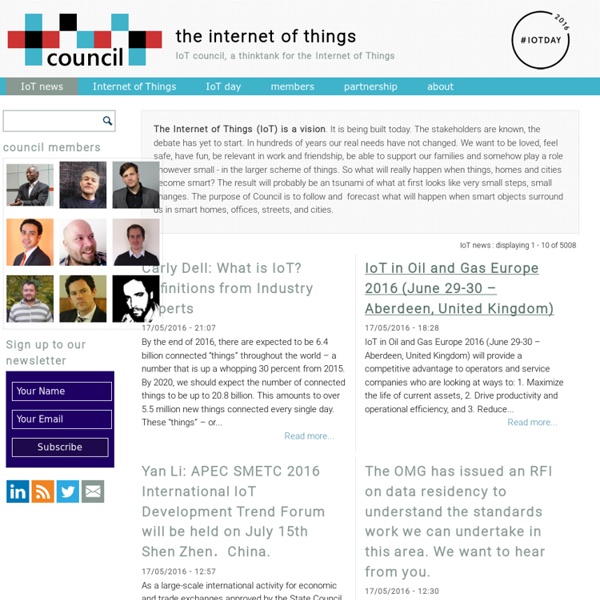



http://www.theinternetofthings.eu/
Salon SIdO : Autour de l’Internet des objets connectés à Lyon L’événement professionnel « SIdO » consacré à l’internet des objets connectés a ouvert ses portes mardi 07 avril à la Cité Internationale de Lyon. Sur les deux jours, 150 exposants et 3 000 professionnels sont attendus. Deux jours keynotes chargés IBM crée une division Internet des objets dans laquelle il va investir 3 milliards de dollars International Business Machines (IBM) a annoncé le 31 avril son intention d'investir trois milliards de dollars (2,79 milliards d'euros) au cours des quatre prochaines années dans une nouvelle division appelée "Internet pour les objets", afin de vendre son expertise dans la collecte et le traitement des données en temps réel. IBM a indiqué le 31 avril qu'il avait créé une nouvelle division Internet des objets dans laquelle il allait investir 3 milliards de dollars. Le géant américain de l'informatique, basé à Armonk, dans l'Etat de New York, a dit que ses services s'appuieraient sur le "cloud" (informatique dématérialisée).
Contrôler ses Google Glass par la pensée : déjà une réalité La société The Place annonce avoir lancé une application permettant de prendre des photos avec des Google Glass par la simple force de la pensée. Télépathie, téléportation ou télékinésie... Qui n'a jamais rêvé d'acquérir l'un de ses pouvoirs, ne serait ce que le temps d'une journée ? Si pour les deux premières compétences, il va sans doute encore falloir patienter quelques temps, la télékinésie semble, elle, être du domaine du possible, en témoigne l'application lancée par une société britannique, The Place, et baptisée MindRDR .
Site internet d'informations et de documentations généralistes sur l'internet des objets by bigotcorentin Apr 10